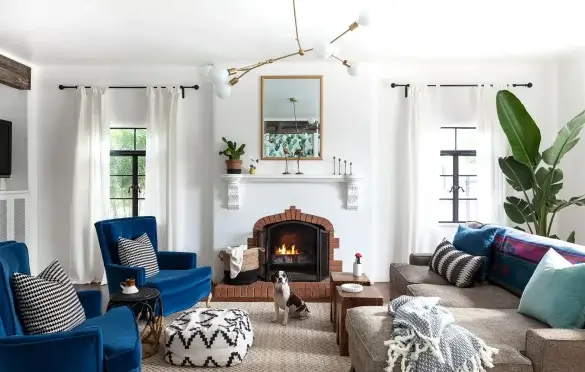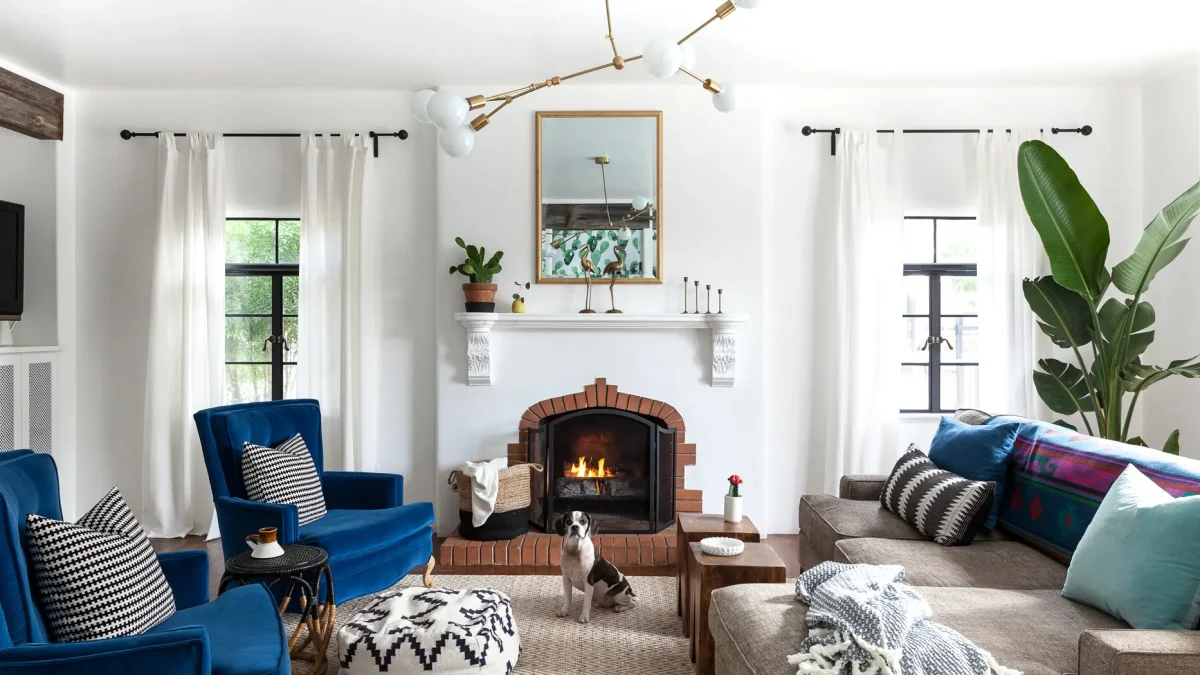
Few things embody warmth and comfort, like a crackling indoor fireplace. Building one requires careful consideration of various elements and components to ensure both safety and aesthetic appeal. This comprehensive guide will walk you through each process step, offering friendly advice and tips to help you craft the perfect indoor fireplace for your home.
Planning Your Indoor Fireplace Project
Before you start construction, take the time to plan your indoor fireplace project thoroughly. Assess the feasibility of adding a fireplace, considering the layout of your space, and identifying your primary goals—whether for aesthetic appeal, supplemental heating, or both.
Budget considerations and potential challenges should also be on your radar.
Tip: Consulting with a professional during the planning stage can provide valuable insights and help you avoid common pitfalls.
Fireplace Design Considerations
Choosing the Right Type of Fireplace
Selecting the right type of fireplace is a crucial decision. Traditional wood-burning, gas, electric, or ethanol—each has its advantages and considerations. Match the fireplace type to your overall design aesthetic and heating preferences.
Tip: Consider the maintenance requirements and convenience of each type before making your decision.
Ventilation and Flue Design
Proper ventilation is key to a safe and efficient fireplace. Determine the optimal venting system for your chosen fireplace type, and ensure your flue pipes comply with safety standards.
Tip: Work with a professional to design a ventilation system that suits your specific space and fireplace type.
Aesthetic Features
Your fireplace’s aesthetics can significantly impact your space’s overall feel. Explore mantel and surround options to complement your home’s style, and consider customization possibilities for a personalized touch.
Tip: Take inspiration from design magazines and online platforms to discover unique fireplace aesthetics.
Construction Materials and Safety Measures
Firebox Construction
Selecting the right material for your firebox is crucial for safety and functionality. Ensure the chosen material is heat-resistant and can withstand the demands of regular use.
Tip: Firebrick is popular for its durability and ability to withstand high temperatures.
Surrounding Materials
Choose materials for the fireplace surround that enhance the aesthetic and contribute to safety. Keep in mind that materials closer to the fire should be non-combustible.
Tip: Natural stone, tile, or fire-resistant gypsum board are excellent choices for fireplace surrounds.
Safety Measures
Incorporate safety measures into your fireplace design, such as installing a spark arrestor and using fire-resistant materials. Additionally, be diligent in complying with building codes and safety regulations to ensure your home’s and its occupants’ well-being.
Tip: Consult local authorities or a fireplace professional to understand and adhere to safety regulations.
Fireplace Installation Process
Foundation and Framing
Prepare the foundation carefully to support the weight of the fireplace. Consider the framing requirements for structural integrity, ensuring the fireplace integrates seamlessly into your home.
Tip: Consult with a structural engineer during the planning phase to ensure a solid foundation and framing.
Inserting the Firebox
Install the firebox securely, ensuring it fits snugly into the designated space. Proper placement is crucial for both safety and optimal heat distribution.
Tip: Double-check the dimensions of your firebox and the designated space to avoid installation issues.
Ventilation and Flue Installation
Implement the chosen ventilation system and install the flue for efficient smoke and gas dispersion. Proper installation is critical for the safety and functionality of your fireplace.
Tip: Schedule regular inspections of your ventilation system to ensure it remains in good working condition.
Additional Features for Enhanced Functionality and Ambiance
Heat Efficiency Features
Explore additional features to improve the efficiency of your fireplace, such as inserts for better heating. Consider energy-efficient models to reduce environmental impact and energy costs.
Tip: Fireplace inserts can increase your fireplace’s heating efficiency, especially with a wood-burning or gas fireplace.
Smart Fireplace Technology
Integrating smart features can enhance the functionality of your fireplace. From remote control options to programmable settings, smart technology offers convenience and control.
Tip: Research the latest smart fireplace technologies to find features that align with your lifestyle.
Maintenance and Care
Routine Cleaning
Maintaining a clean and efficient fireplace is essential for both safety and performance. Develop a routine for cleaning- addressing soot and debris buildup regularly.
Tip: Use a chimney brush and vacuum to clean the flue and firebox, and consider professional chimney cleaning annually.
Inspection and Repairs
Regular inspections are crucial for ensuring the safety of your indoor fireplace. Address common issues promptly and schedule necessary repairs to keep your fireplace in top condition.
Tip: Hire a certified chimney sweep to conduct annual inspections and address any concerns.
Case Studies: Successful Indoor Fireplace Projects
Explore real-life examples of homes with beautifully crafted indoor fireplaces. Before-and-after transformations and homeowner testimonials provide valuable insights and inspiration for your own fireplace project.
Tip: Seek inspiration from successful projects to refine your design choices and discover new possibilities.
Conclusion
Building your dream indoor fireplace involves a combination of thoughtful planning, careful design considerations, and adherence to safety measures. With the right elements and components in place, you can create a cozy haven that enhances the ambiance of your home.
Andres Walsh
Related posts
Stay connected
Today's pick
- Things to Remember While Designing Your Custom Modular Kitchen in GurgaonGurgaon now known as Gurugram is the second largest city in the state of Haryana and is a reflectiossn of an ideal modern city with futuristic goals. Witnessing rapid urbanization, it has also emerged as a hub for contemporary homes, with homeowners seeking innovative and... The post Things to Remember While Designing Your Custom Modular […]

